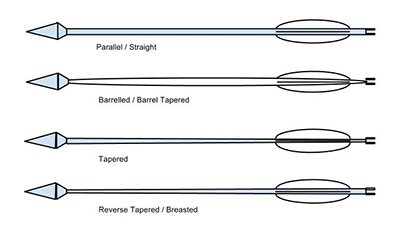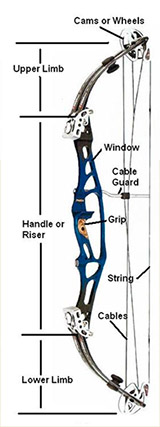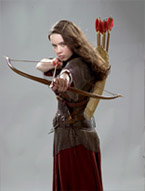Bows and Arrows
Technology has made it easier to shoot bows, making the sport appealing to a wider audience. Though it still demands a lot of practice and skill, it is now easier to shoot straighter arrows, thanks to more forgiving mechanical releases, arrow rests and sighting devices.
Types of bow
- Recurve bow: a bow with the tips curving away from the archer. The curved limbs allow for increased force, accuracy and speed without adding to the draw weight.
- Reflex bow: a bow whose entire limbs curve away from the archer when unstrung. The curves are opposite to the direction in which the bow flexes while drawn.
- Self bow: a bow made from one piece of wood.
- Longbow: a self bow with limbs rounded in cross-section, about the same height as the archer so as to allow a full draw, usually over 5 feet (1.5 metres) long.
- Flatbow: the limbs are roughly rectangular in cross-section. Traditional in many Native American societies and the most efficient shape for bow limbs.
- Composite bow: a bow made of more than one material.
- Takedown bow: a bow that can be demounted for transportation, usually consisting of 3 parts, being 2 limbs and a riser.
- Compound bow: a bow with mechanical aids to help with drawing the bowstring. Usually, these aids are pulleys at the tips of the limbs.
- Crossbow: a crossbow shoots a ‘bolt’ or ‘quarrel’, rather than an arrow.
Arrows
An arrow usually consists of a shaft with an arrowhead attached to the front end, with fletchings and a nock at the other. Most modern arrows are 56 -76 cm in length, Historically made from hard wood, arrows have evolved to include glass and metal. Today’s arrows are made from aluminium alloy and/or carbon for strength, agility and speed. Fletching, which was originally turkey-wing feathers affixed to the arrow shaft, are today plastic or vinyl vanes.
Arrow types
- Breasted: thickest at the area right behind the fletchings, and tapers towards the head.
- Bob-tailed: thickest right behind the head, and tapers to the nock
- Barrelled: is thickest in the centre of the arrow.
- Target: used for target shooting rather than warfare or hunting, and usually have simple arrowheads.

Arrowheads
A number of different types of arrowheads are known, with the most common being:
- Bodkins: heads are simple spikes made of metal of various shapes, designed to pierce armour
- Broad-heads: usually triangular or leaf-shaped and has a sharpened edge or edges.
- Piles: a simple metal cone, either sharpened to a point or somewhat blunt, that is used mainly for target shooting. A pile head is the same diameter as the arrow shaft and is usually just fitted over the tip of the arrow.
- Blunt head: flat at the end and used for hunting small game or birds, it is designed to not pierce the target nor embed itself in trees or other objects.
- Barbed head: used in warfare or hunting.


